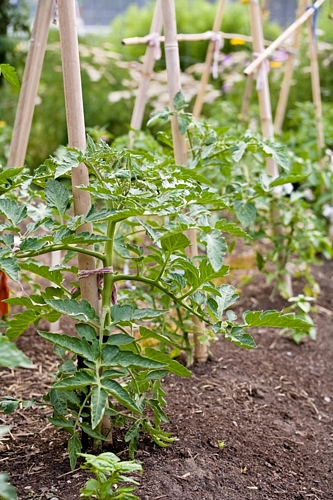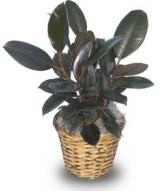[this is another Coursera course assignment]
Global warming is happening. As urban dwellers, what can we do to help fight against climate change? One of the many things that we can do to help is green our cities by growing our own organic gardens and organic food – sustainable organic gardening.
Is organic gardening more sustainable than traditional gardening? The answer is, of course, yes. This essay is going to explain the reasons why urban gardening can help fight against global warming and why should we prefer organic gardening over traditional gardening.
Global warming is primarily a problem of too much carbon dioxide (CO2) – the dominant greenhouse gas – in earth’s atmosphere. The CO2-dominant greenhouse gases in the atmosphere act as a heat barrier, blocking heat (thermal radiation) going out of the atmosphere and warming the planet. However, CO2 doesn’t block heat coming to the earth from the sun. CO2 can only absorb at very specific wavelengths and some of these wavelengths happen to be emitted by the earth. The wavelengths emitted by the sun are too short to be absorbed by CO2.
The burning of fossil fuels and clearing of forests to create pastures and plantations has contributed to a 40% increase in the atmospheric concentration of CO2 since the beginning of Industrial Revolution. This increase has been continuing despite the absorption of a large portion of the emissions by various natural CO2 sinks involved in the carbon cycle. Some CO2 is absorbed by the oceans and some is absorbed by plants and soils – organic-rich soils.
Urban gardening will increase the green coverage of the cities and hence increase the ability for absorbing CO2 emissions of the urban areas. Urban gardens include all the small-area and large-area urban gardening practices, for example, back-yard, front-yard, side-yard, rooftop, balcony and container gardens, and community gardens, etc.
Making urban gardens more supportive of biodiversity will make the gardens more sustainable. One good example for the need of biodiversity is to keep bees with us for generations to come, and for sustainable agriculture. Lawns are unnatural habitats, and they can be converted to more natural garden habitats by planting a variety of native vegetation types including vegetables, grasses, flowers, shrubs and trees to attracts beneficial insects and birds. Big and tall trees are our best friends to fight against climate change, and they use our limited land resources more efficiently and they provide shades for other plants so that we can water less.
As the population pressure worsens, urban gardening can play a key role in the sustainability of the future food production. With biodiversity in mind, we can grow fruit trees, vegetables and food crops in our urban gardens with other types of vegetations. Urban food production is an important part of the sustainable local food movement.
Organic gardening will reduce chemical use in many ways. First, organic gardeners don’t use synthetic fertilizers, pesticides, plant growth regulators, genetically modified organisms, etc.; second, organic gardens will make healthier environment and provide healthier food – which also means they’ll make us healthier to reduce medicine (chemical) use; third, organic-rich soils will grow strong plants to compete with weeds and will reduce nutrient (chemical) leaching to pollute water sources, and are more capable of absorbing CO2 – a key factor to fight against global warming.
The following are the main aspects of organic gardening: composting, mulching, crop rotation, ground cover planting, companion planting, water conservation, and no synthetic fertilizers, pesticides, plant growth regulators and genetically modified plants.
For many urban gardeners, traditional gardening is probably easier than organic gardening, especially for new gardeners. However, organic gardening can be easy too once you know more about plants, soil and how to make organic pesticides and herbicides. Moreover, organic gardening is healthier and more sustainable.
Global warming is happening. Let’s green our cities by planting organic urban gardens with biodiversity, and fight against the climate change using our shovels.

 Compost can be used as a top dressing or mixed with the soil. You can buy or get free compost from your community, you can even make your own compost.
Compost can be used as a top dressing or mixed with the soil. You can buy or get free compost from your community, you can even make your own compost.
 Trees, shrubs, herbs, flowers, grasses and other plants are nature’s air purifiers. They constantly clean the air and reduce the air pollution. Plants in your home or office are not only decorative, but also air purifiers. Here is a list of popular and highly effective indoor plants that homeowners and office dwellers can have as living air purifiers:
Trees, shrubs, herbs, flowers, grasses and other plants are nature’s air purifiers. They constantly clean the air and reduce the air pollution. Plants in your home or office are not only decorative, but also air purifiers. Here is a list of popular and highly effective indoor plants that homeowners and office dwellers can have as living air purifiers: